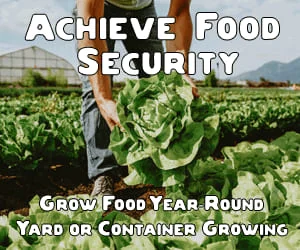What Are The Best Plants To Grow In Hydroponics? An Overview

Introduction
Welcome to our comprehensive guide on hydroponic plant growth. In this article, we will explore the best plants for hydroponics, the benefits of hydroponic plant growth, setting up a hydroponic system, and much more. Hydroponic soilless agriculture offers a sustainable and innovative solution for maximizing plant growth in minimal spaces. Whether you are a beginner or an experienced gardener, this guide will provide you with valuable insights into the world of hydroponics.
Answer to the Question
Hydroponics is often used to grow a variety of plants such as lettuce, tomatoes, cucumbers, and herbs. When it comes to the question at hand, there are several key aspects to consider in the context of hydroponic plant growth. It is possible to grow many plants using hydroponics. How well they grow depends entirely on the skill level of the grower. That being said, there are some plants that lend themselves better to this growth method than others. There are many benefits and options available to choose from. In addition, there are different methods to setting up a hydroponic system.
Benefits of Hydroponic Plant Growth
Increased Growth Rate
Hydroponic plant growth promotes an increased growth rate compared to traditional soil-based gardening. The controlled environment and precise delivery of nutrients contribute to accelerated plant development, resulting in higher yields and faster harvest cycles.
Space Efficiency
One of the key benefits of hydroponic plant growth is its space efficiency. Hydroponic systems require minimal space, making them ideal for indoor gardens, urban settings, and small to medium-sized growing areas. By eliminating the need for soil, hydroponics make efficient use of space, allowing for maximum plant density.
Environmental Sustainability
Hydroponic plant growth is environmentally sustainable as it minimizes water usage and reduces the risk of soil erosion. The closed-loop system of hydroponics conserves water by recycling nutrient solutions and prevents the release of harmful chemicals into the environment. Additionally, hydroponic gardens can be designed to operate with renewable energy sources, further enhancing their environmental sustainability.
Best Plant Options for Hydroponics
Leafy Greens
Leafy greens, such as lettuce, spinach, and kale, are among the best plant options for hydroponic systems. Their shallow root systems make them well-suited for nutrient-rich solutions, and they exhibit rapid growth rates in hydroponic environments.
- Improved nutrient absorption: In hydroponic systems, leafy greens have direct access to the essential nutrients they need for growth, leading to healthier and more vibrant plants.
- Space efficiency: Since leafy greens have shallow root systems, they can be grown in compact spaces, making hydroponics an ideal choice for urban and indoor gardening.
- Water conservation: Hydroponic systems use water more efficiently than traditional soil-based gardening, making it a sustainable method for cultivating leafy greens.
- Year-round cultivation: With hydroponics, it’s possible to grow leafy greens regardless of the season, providing a consistent supply of fresh produce.
Leafy Green Best Growing Conditions Lettuce
Requires moderate light and a temperature range of 45-75°F (7-24°C) Spinach Thrives in cooler temperatures, ideally between 50-70°F (10-21°C) Kale Tolerates a wide range of temperatures and benefits from full sun or partial shade
Click The Banner Below To Learn More About Organic Growing
Herbs
- Basil
- Cilantro
- Mint
Herbs are a wonderful addition to any hydroponic garden, offering a wealth of flavors and aromas. Let’s dive into the specifics of cultivating these delightful plants in a hydroponic environment.
Hydroponics provides a controlled and optimized environment for herbs, yielding numerous advantages:
- Enhanced Flavor: Hydroponically-grown herbs are known for their robust and intense flavors, surpassing those grown in traditional soil.
- Rapid Growth: By receiving essential nutrients directly to their roots, hydroponic herbs exhibit accelerated growth, allowing for more frequent harvests.
- Space Efficiency: Growing herbs hydroponically eliminates the need for large soil beds, making it a space-saving option for indoor gardens.
Here are some effective techniques for cultivating herbs in a hydroponic system:
Deep Water Culture (DWC) A popular method involving suspended plant roots in a nutrient-rich solution, promoting ample aeration and nutrient absorption.Nutrient Film Technique (NFT) An efficient system where a thin film of nutrient solution flows over the plant roots, providing optimal moisture and nutrients. This method involves a regulated supply of nutrient solution to the plant roots through drip emitters, ensuring consistent hydration and nourishment. Embark on your hydroponic herb garden journey with confidence, knowing that basil, cilantro, and mint thrive in this innovative and rewarding cultivation method.
Click The Banner Below And Start Growing Super Medicinal Plants
Fruits
Strawberries, tomatoes, and peppers are popular fruit-bearing plants that can be successfully grown in hydroponic systems. With the right nutrient balance and environmental conditions, hydroponic fruits can flourish, offering a convenient way to enjoy homegrown produce.
Vegetables
When it comes to hydroponic gardening, the versatility of vegetables is truly remarkable. From vibrant cucumbers and crisp bell peppers to tender green beans, there is a wide array of vegetables that thrive in hydroponic environments. With the efficient delivery of nutrients and water, hydroponic systems provide the ideal conditions for these nutrient-rich plants to flourish. Let’s delve deeper into the specific vegetables that excel in hydroponics:
- Cucumbers: Cucumbers are prolific growers in hydroponic systems, yielding an abundance of crisp and refreshing fruits. Their vining nature makes them well-suited for vertical hydroponic setups, maximizing space usage and productivity.
- Bell Peppers: In hydroponics, bell peppers produce vibrant and robust fruits with exceptional flavor. The controlled environment of hydroponic systems ensures consistent growth, resulting in high-quality, colorful bell peppers.
- Green Beans: Hydroponically grown green beans are known for their tender texture and prolific yield. With optimized nutrient delivery, these beans thrive, offering a bountiful harvest of delicious and nutritious pods.
Click The Banner Below And Start Growing Delicious Mushrooms
Flowering Plants
Flowering plants like orchids, roses, and sunflowers are excellent candidates for hydroponic cultivation. The controlled environment provided by hydroponic systems enables these plants to thrive and produce stunning blooms of vibrant colors.
- Orchids: Orchids are known for their exquisite beauty and delicate blooms. In hydroponics, they can be grown with precision, allowing for an array of colors and patterns to flourish.
- Roses: Hydroponic cultivation of roses results in healthier plants with stronger stems and more vibrant flowers. The controlled nutrient delivery ensures optimal growth and blooming.
- Sunflowers: These cheerful, sun-facing flowers can also be cultivated using hydroponic techniques, providing a colorful and uplifting addition to any indoor garden.
Setting Up a Hydroponic System
Basic Components
- Reservoir
- Growing Medium
- Water and Air Pumps
- Grow Lights
- pH Test Kit
- Timer
When setting up a hydroponic system, there are several basic components that are essential for the system to function effectively and to support plant growth. These components include:
- Reservoir: The reservoir holds the nutrient solution and provides a constant supply of water to the plants.
- Growing Medium: The growing medium serves as the support for the plants’ root systems and provides stability while allowing for ample oxygen and nutrient absorption.
- Water and Air Pumps: Use pumps to circulate the nutrient solution and oxygenate the water to ensure optimal conditions for plant growth.
- Grow Lights: In indoor hydroponic systems, grow lights are essential to provide the right spectrum and intensity of light for photosynthesis.
- pH Test Kit: Maintaining the pH level of the nutrient solution is crucial for nutrient uptake by the plants. Use a PH Test Kit to monitor and adjust the pH as needed.
- Timer: A timer is used to automate the lighting and watering cycles, ensuring consistency and effective plant care.
Types of Hydroponic Systems
There are several types of hydroponic systems, each with its own advantages and best uses. Here are the most common types:
- Deep Water Culture (DWC)– This method involves suspending the plant roots in a nutrient solution. It’s simple and inexpensive, making it ideal for beginners.
- Nutrient Film Technique (NFT) – In this system, a thin film of nutrient solution flows along the bottom of the roots, providing oxygen and water. It’s best for smaller plants like lettuce and herbs.
- Ebb and Flow (Flood and Drain) – This system works by periodically flooding the plant roots with the nutrient solution and then draining it. It’s versatile and suitable for a wide range of plants.
- Aeroponics – Aeroponic systems mist the roots with a nutrient solution, providing high levels of oxygen. This method allows for fast growth and is popular for growing leafy greens and herbs.
- Drip System – Drip systems deliver a regulated flow of nutrient solution directly to the plant roots, making them suitable for a variety of plant types and sizes.
Nutrient Solutions
Nutrient solutions are a vital component of any hydroponic system, providing essential elements for plant growth in the absence of soil. A well-formulated nutrient solution delivers the necessary macronutrients, micronutrients, and trace elements required for robust plant development.
- Macronutrients: These include nitrogen, phosphorus, potassium, calcium, sulfur, and magnesium. Each plays a specific role in plant growth and development.
- Micronutrients: These are essential in smaller quantities and include elements like iron, manganese, copper, zinc, boron, and molybdenum.
- Trace Elements: Some nutrient solutions also include trace elements. Plants need these trace elements for increased growth and health.
When preparing a nutrient solution, it’s crucial to follow manufacturer guidelines and measure the concentration accurately. Monitoring and adjusting the pH level of the solution is also critical to ensure nutrient uptake by the plants. Additionally, understanding the specific nutrient requirements of different plant species is essential for customizing the solution to meet their needs.
Conclusion
In conclusion, hydroponic plant growth offers a range of benefits including increased growth rate, space efficiency, and environmental sustainability. The best plants for hydroponics encompass a diverse selection of leafy greens, herbs, fruits, vegetables, and flowering plants, each thriving in soilless environments. Setting up a hydroponic system involves essential components, various system types, and carefully balanced nutrient solutions, providing a versatile and efficient approach to plant cultivation. Embracing hydroponic gardening opens the door to innovative and sustainable practices, presenting an exciting opportunity for gardeners to maximize plant growth in limited spaces.




